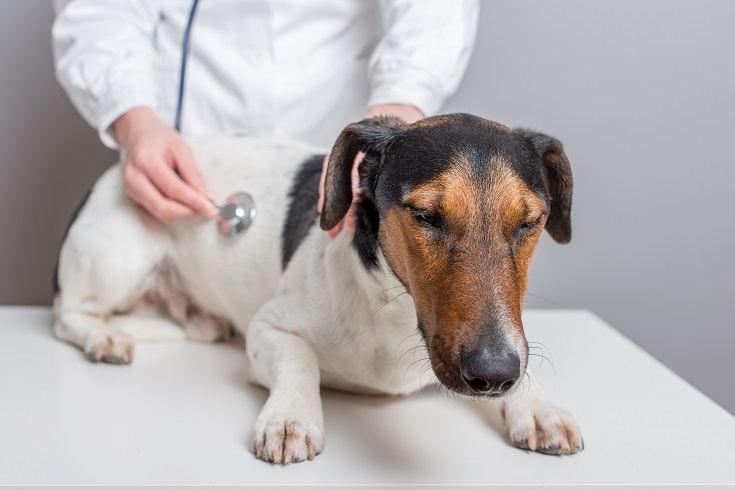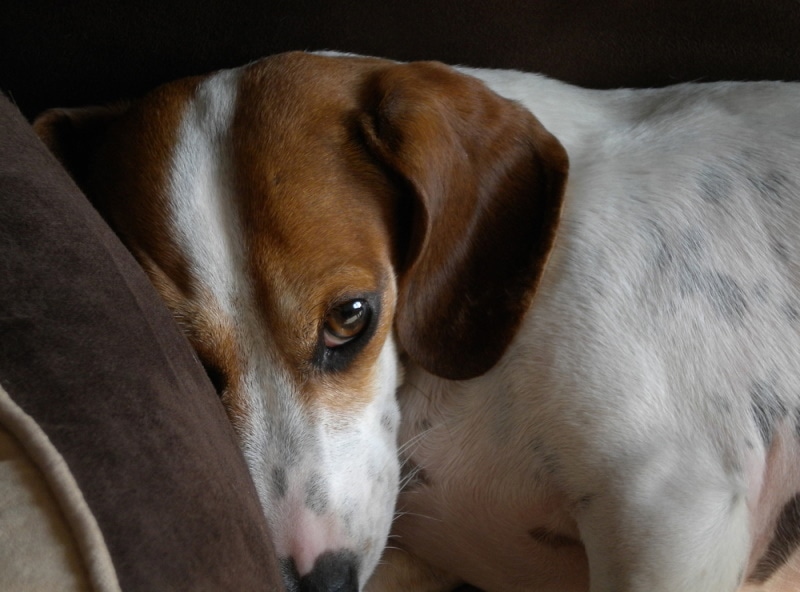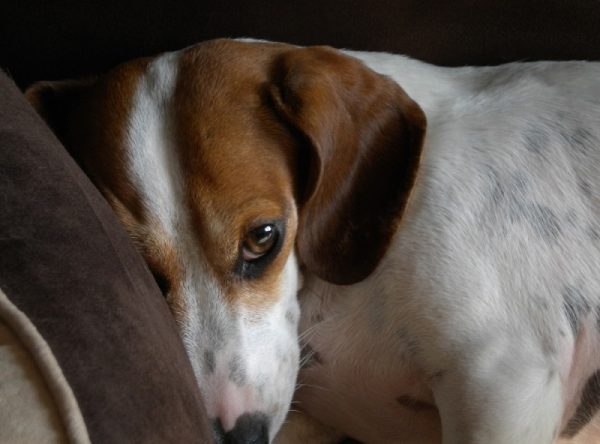Click to Skip Ahead
If you have a Dachshund or are interested in adopting one, you’ve probably heard that they are prone to “back problems”. But what exactly does that mean? IVDD, or Intervertebral Disc Disease, is a common condition that affects the spinal cord of young to middle-aged dogs (though any age can be affected), with Dachshunds being overrepresented.
In this article, we’ll discuss what the condition is, what to watch for, what treatments are available, and why Dachshunds are so prone to having this condition.
What is IVDD?
In order to understand IVDD, having a basic knowledge of spinal anatomy is very important. If you feel along your dog’s back, you should be able to gently palpate the spine or individual vertebrae that are all connected. These vertebrae start at the back of the skull and continue all the way through the tail. In between each of these vertebrae are intervertebral discs. The discs help with movement, shock absorption, and also help to connect the vertebrae. The spinal cord and CSF (cerebrospinal fluid) runs within these vertebrae throughout the length of the spine.
The intervertebral disc is made of an outer portion called the annulus fibrosis, which helps to connect each vertebrae. The inner portion of each disc is called the nucleus pulposis, which helps with shock absorption. Think of the disc as a jelly filled donut, with the slightly more firm outer dough (annulus fibrosis) containing the jelly filled inside (nucleus pulposis).
Intervertebral disc disease is when one or more of the discs along the spine extrude or protrude out of their space, causing compression of the spinal cord. Extrusion is typically when the nucleus extrudes out and causes compression of the spinal cord. Protrusion is when the outer annulus fibrosis starts to push out, causing compression of the cord.

What Are the Causes of IVDD?
There are two types of IVDD—Type I and Type II. Type I is classified as an extrusion. It’s typically a chronic and potentially genetic degenerative process. Type I is most common in Dachshunds and other dogs with long bodies and short legs.
Type II is classified as a protrusion. This is more commonly seen as an acute process, often secondary to trauma, such as a jump or fall from a height, being hit by a car, etc. Type II is going to be more common with medium to large breed dogs and, as stated, is typically an acute process.
While the above commonalities are listed, any dog of any size, breed, and age can suffer from either Type I or Type II IVDD.
What Are the Signs of IVDD?
This completely depends on what area of the spinal cord is affected by the disc disease. In general, Dachshunds may get weakness of their legs, called ataxia. Your dog may walk and seem as if they are drunk, have trouble walking (weakness), and/or cross their legs or scuff the top of their feet when walking. Depending on the level of spine affected, this will determine if just the front legs, just the back legs, or all four legs have neurologic deficits from the IVDD.
If the mid to lower back is affected, Dachshunds will often stand or walk with an arch or hunched back. You may think your dog has abdominal pain because they may grunt, moan, or vocalize when you touch them around their back or abdomen. Oftentimes, it’s because they are tensing or guarding their back so much that they appear to have belly pain.
Other dogs may randomly vocalize, be panting when it’s not hot, and/or be unable to get comfortable. Your dog may have trouble going to the bathroom. Either they are unable to hold it and are going on themselves, or they are unable to express their bladder—and you will notice them be unable to urinate.
The worst case scenario is if your Dachshund is unable to move one or more of it’s legs, are dragging their legs, or cannot feel their affected legs.

What Treatments Are Available for IVDD
If you notice any of the abnormal signs listed above in your dog, or if they are acting painful in general, seek medical attention by a veterinarian immediately. Your veterinarian will assess the neurologic status of your Dachshund and discuss a treatment plan with you.
Some Dachshunds do great with a course of strong anti-inflammatories, pain medications, muscle relaxers, and rest. This means that your dog should be crated at any time they aren’t using the bathroom, to keep them quiet and relaxed for at least a few weeks.
If your Dachshund has rapidly declined, is unable to walk and/or feel their legs, or has lost the ability to use the bathroom correctly, your veterinarian may recommend surgical intervention. Please be aware that this is not a straightforward surgery that any veterinarian can perform. Typically only board-certified veterinary neurologists and/or surgeons are capable of performing this surgery. These board-certified specialists will first perform an MRI or CT scan (depending on the facility) prior to proceeding with surgery. Rest and pain medications will still be prescribed following surgery.
In either case, it’s extremely important that your veterinarian monitor your pet. It’s also important that you do not administer any OTC medications, such as aspirin, Tylenol, Ibuprofen, etc. Not only can these medications be toxic to your pets, they may also prohibit your veterinarian from treating with affective veterinary-only products that will work.

What Are the Potential Dangers of IVDD?
IVDD, at minimum, causes compression and inflammation around the spinal cord. Depending on the amount of damage that occurs, there may also be bleeding in that area of the cord, bruising or complete loss of function. Depending on the level of the spinal cord where the damage occurs, your beloved pet may lose some or all of their ability to walk, feel their legs, urinate, and/or defecate normally.
The damage may or may not be permanent, again depending on the severity. Some dogs will never regain the use of their leg(s) and/or the ability to go to the bathroom normally. Other dogs may regain the use of their legs, but also have trouble walking and/or getting around.
Frequently Asked Questions
Why are Dachshunds So Prone to This Disease?
Dachshunds are considered a chondrodysplastic breed. In essence, this means they are “short-limbed”. The extensive length of their bodies, as compared to their short limbs, makes them chondrodysplastic. Other breeds that are included in this category include Basset Hounds and Corgis.
There has been genetic components that have been found in Dachshunds that will predispose them to IVDD as well. As discussed above, any breed can get IVDD, but Dachshunds are well overrepresented with up to 25% of them suffering from this disease.
What Other Types of Dogs Can Get IVDD?
The short answer to this is any type of dog can get IVDD. While Dachshunds are absolutely overrepresented, with up to 25% of the breed being affected by the disease, it knows no size or breed boundary. Typically, young to middle-aged, smaller breed dogs will be more prone to getting Type I. While middle-aged to older large-breed dogs will be more prone to getting Type II. Any size or breed of dog can also be affected by a traumatic disc from trauma, such as getting hit by a car, a high fall, etc.
Summing Up
Intervertebral disc disease, or IVDD, is a common disease seen in many breed dogs. Dachshunds are much more affected by what is referred to as Type I disease, though any size and breed dog can get Type I or Type II. Depending on the level of the spinal cord affected, the severity of damage to the cord and the ability of your dog to feel its legs and walk will help your veterinarian determine the best course of treatment. Your dog may do well with pain medications, anti-inflammatories, and rest, while others may require surgery to recover.
Featured Image Credit: Melanie Metz, Shutterstock













